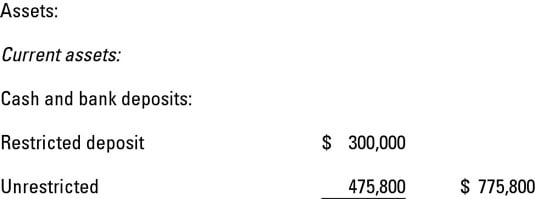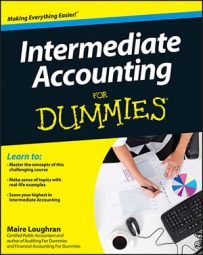The big deal about controlling cash for your intermediate accounting class is making sure the balance sheet presentation doesn’t mislead users with the amount of cash available to meet day-to-day expenses. The major issue here is to properly identify restricted cash, which is cash that’s spoken for. Restricted cash is set apart from other cash accounts.
Cash is an account that is inherently risky, because it’s liquid and lacking proper controls and is subject to misappropriation by dishonest employees; but this is an auditing class topic.
In other words, the cash isn’t available for immediate use. Examples are petty cash funds or funds transferred from the operating account into a payroll account in anticipation of cutting employee checks. The funds may still be there, but they are earmarked for another purpose.
De minimis amounts sitting in petty cash or a separate payroll account don’t have to be separately stated. Following is an example when the restricted cash presentation comes into play:
A large manufacturing company receives an advance payment of $300,000 on June 1 from a customer for a piece of industrial machinery that takes five months to make. According to the customer contract, the manufacturer must transfer this deposit in a separate bank account and cannot use it until the customer receives the machinery.
The advance payment shows up as restricted cash on the manufacturer’s books because it cannot be used until a future event (the shipment of equipment). After the customer accepts the machinery, the manufacturer will be able to use the cash in operations.


